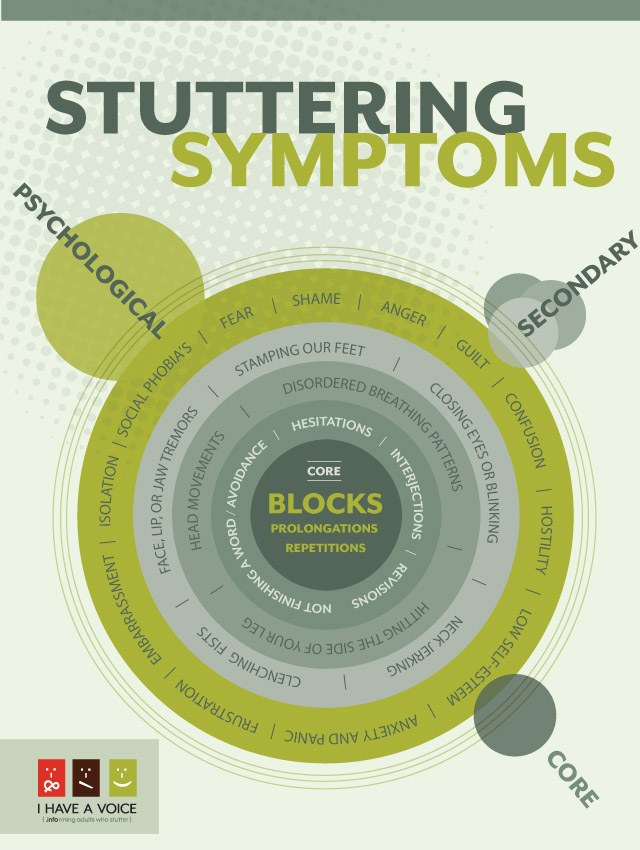Types of Disfluency
The core behaviors of stuttering disruptions are classified as:

Some experts believe that the characteristic disruption of stuttering can be classified as blocks. And repetitions and prolongations are characteristic coping mechanisms to force a word out. [15]
Secondary symptoms and disfluencies can also be observed, such as:
- Hesitations (Lasting over a second)
- Interjections (Saying "um" and "er")
- Revisions (Going back and rephrasing a sentence or phrase)
- Not finishing a word / avoidance
- Disordered breathing patterns
- Physical movements
Let's be clear that everyone has moments of disfluency. All of the disfluencies listed above can be seen in people who speak normally, with the exceptions of blocks. The difference is that in people who stutter:
- the disfluency is more severe,
- the frequency of disfluency is greater,
- the disfluencies tend to carry extra tension, and
- disfluencies within a word or sound are regarded as characteristically stuttering. [16]
Differentiating From Other Types of Stuttering Disfluencies
This site focuses on developmental stuttering, which develops from childhood. As mentioned above, everyone has moments of disfluency, but they aren't considered stutterers. [17] There are those who have acquired a neurogenic stutter. Which can result from a stroke, head trauma, or other brain injury. This type of stuttering happens due to the brain not being able to coordinate all of the components necessary for speech. There is a third type of stuttering that is very rare. It can be caused by emotional trauma. [18][15] Dennis Drayna, Ph.D., "Telephone Interview with Dr. Drayna, Chief, Section on Systems Biology of Communication Disorders at the National Institutes of Health", November 24, 2009.
[16] Ibid.
[17] Parry, Understanding & Controlling Stuttering: A Comprehensive New Approach Based on the Valsalva Hypothesis, 3.
[18] "Stuttering-An Overview by NIH", n.d., http://www.nidcd.nih.gov/health/voice/pages/stutter.aspx.
